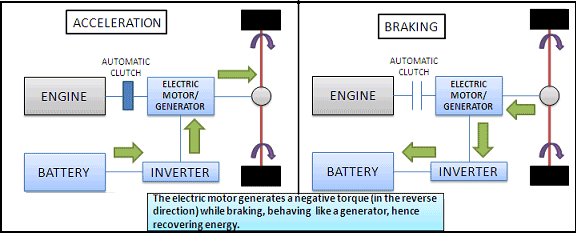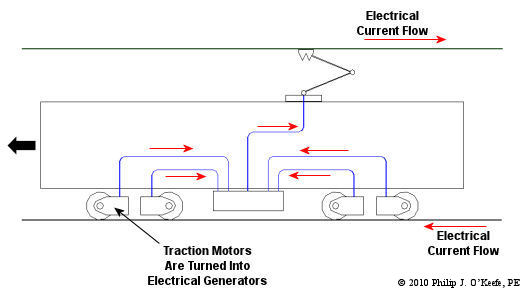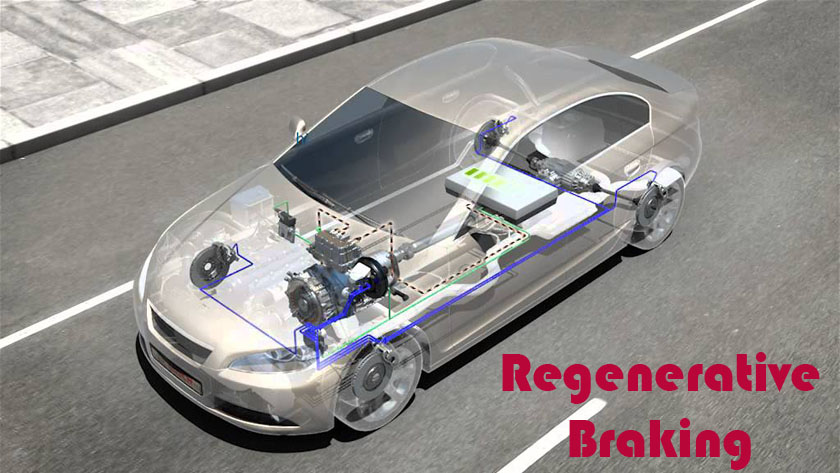We all know how vital the brake system of a vehicle is. However, what most people fail to realize is that it is also the biggest source of wasting energy. Whenever we apply brakes, the kinetic energy of our car gets converted into heat which is then dissipated into the air. This is where regenerative braking can be employed; a solution to this wastage.
RELATED: Different types of hybrid engines
Now let’s see how does regenerative braking work:
Regenerative Braking:
Regenerative refers to the aspect of these brakes which re-captures energy from the engine. It means capturing the vehicle’s momentum (kinetic energy) and turning it into electricity that recharges (regenerates) the onboard battery as the vehicle is slowing down and/or stopping. Typically, regenerative brakes are used in fully-electric or hybrid motors. This is because of a unique feature of electric motors. When running forward, electric motors convert electrical energy into mechanical energy; when running in the opposite direction, an electric motor becomes a generator and captures energy.
Using motor as the generator, these brakes help in charging the battery by reversing the process when the car is slowed down. A braking controller is used to reverse the direction of the motor to be used as a generator, but only when the battery can handle this reversal energy; this is perhaps the most important task of the controller. When you brake, the braking controller diverts the kinetic energy back to the battery that otherwise would have normally been lost.
More importantly, the brake controller decides whether the motor is capable of handling the force necessary to stop the car. If the force would damage the motor or inhibit the vehicle’s ability to stop in time, traditional friction brakes (regenerative systems feature both regenerative braking and traditional friction brakes) take over.
Working:
Mostly, hybrid vehicles use an electronic throttle control system (drive by wire). What happens is that when the throttle is pushed, the computer will send a signal to the motor/generator through the relay and inverter/converter. The harder the push, the faster the vehicle. In a hybrid, depending upon load, battery state-of-charge and the design of the hybrid drivetrain, a heavy throttle will also activate the internal combustion engine (ICE) for more power.
Similarly, when releasing the pedal, the current flow will become lessened, and as a result, the vehicle would slow down. Lifting the pedal even more or completely losing the throttle will reverse the current direction, making the motor function as a generator – this is how regenerative braking starts.
 With the electronic throttle closed and the vehicle still moving, all of its kinetic energy can be captured to both slow the vehicle and recharge its battery. As the onboard computer signals the battery to stop sending electricity (via the relay) and start receiving it (through a charge controller), the motor/generator stops receiving electricity for powering the vehicle and starts sending current back to the battery for charging. As the armature of the generator is opposed by the force of induced current as it moves in the magnetic field, this works opposite to the kinetic energy, slowing the vehicle down.
With the electronic throttle closed and the vehicle still moving, all of its kinetic energy can be captured to both slow the vehicle and recharge its battery. As the onboard computer signals the battery to stop sending electricity (via the relay) and start receiving it (through a charge controller), the motor/generator stops receiving electricity for powering the vehicle and starts sending current back to the battery for charging. As the armature of the generator is opposed by the force of induced current as it moves in the magnetic field, this works opposite to the kinetic energy, slowing the vehicle down.
Efficiency:
Hybrid vehicles with regenerative braking will typically see a 10-25% improvement in fuel economy, but the efficiency of regenerative brakes on a conventional fossil fuel only vehicle is to be determined, mostly because the system is still being perfected. Currently, it gives a boost of 5-10%, which isn’t bad considering that conventional vehicles will not use an electric motor to recapture braking energy. Instead, conventional vehicles will use capacitors or hydraulics to store energy re-captured from braking, which in turn will be used later (either as electricity or hydraulic pressure).

